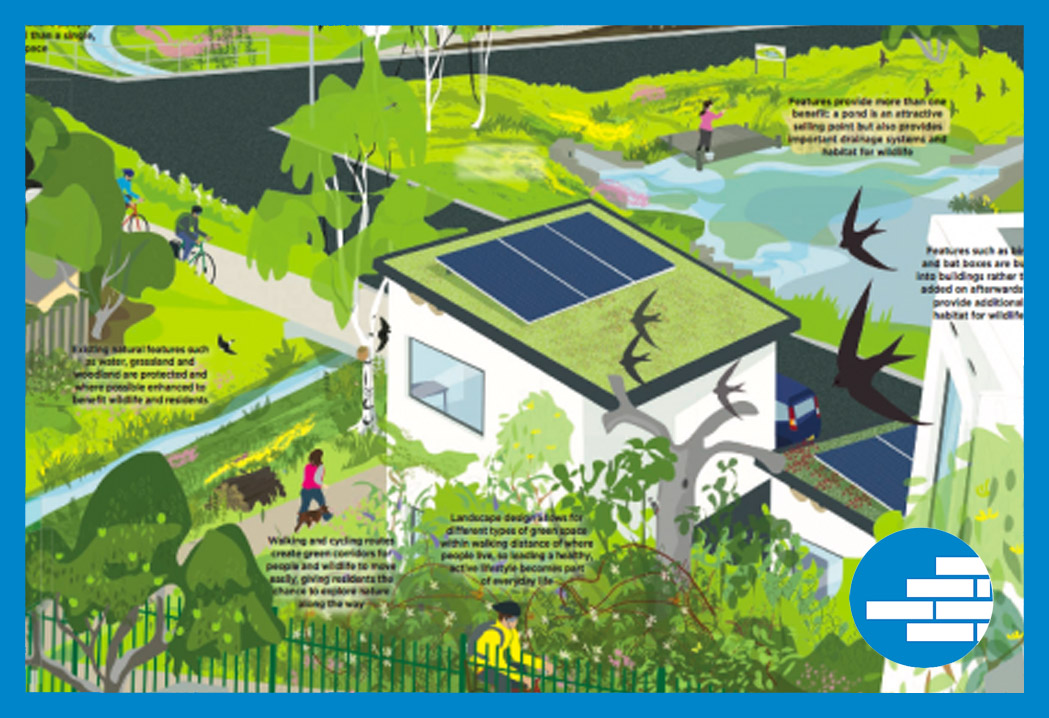About
Building with Nature is an accreditation scheme which sets a benchmark for quality in the planning, provision and maintenance of green infrastructure in new developments – from parks, nature reserves, ponds and rivers, to play areas and street trees.
The accreditation emphasises the social value of the natural world. Alongside environmental standards, it incorporates wellbeing standards intended to ensure local green spaces become community assets, which contribute to a local sense of identity and place. As a representative from Building with Nature notes, “Social equity is a big driver in what the certification trying to do, access to the natural world is a very well-evidenced of indicator of mental wellbeing”. Good green spaces have been shown to improve the wellbeing and can help to build social relationships within communities.
Project details
The accreditation was initially developed by Gloucestershire Wildlife Trust, in partnership with the University of the West of England. It has been used in different sites in Gloucestershire including developers Persimmon and Bloor on the Elms Park development in Cheltenham (4,000 plus homes) and Chesterton Farm in Cirencester by developer Bathurst (2350 homes). (2)
According to the creator of the accreditation, the impetus for the scheme was a sense that the natural world is often only considered at the end of the planning process, “The sector tends to leave ‘nature’ to last minute, there is a statutory obligation around protected species, but it’s often a last thought, we wanted to engage earlier in the design and planning process, rather than near the end.”
Building with Nature establishes a set of standards related to wellbeing, water and wildlife against which developments are assessed. The standards were designed in collaboration with planners, developers and designers to ensure they can be practically applied.
Certification can be given at any stage of the process, including to developments that have already been completed. Developments that are yet to be built can be awarded ‘candidate status’. Currently, several large Gloucestershire developments, including Chesterton Farm and Elms Park, have been awarded ‘Candidate Status’ in recognition of their plans for green infrastructure. Certification can also be obtained for policy documents, such as Cotswold District Council’s Green Infrastructure Open Space and Play Space Strategy (2017). (2)

